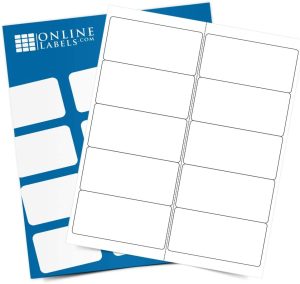Enhancing the supply chain with barcodes offers a multitude of benefits, ranging from improved accuracy and efficiency to increased transparency and streamlined operations. Barcodes play a crucial role in optimizing various aspects of the supply chain, from procurement to distribution. Here’s how barcodes can enhance the supply chain:
- Inventory Management: Barcodes enable accurate and real-time tracking of inventory levels. As products are scanned during various stages, including receipt, storage, and shipment, businesses gain visibility into stock levels and can make informed decisions about restocking and inventory optimization.
- Order Fulfillment: Barcodes expedite order picking and packing processes. Scanning products using barcodes ensures that the correct items are selected and packed, reducing errors and minimizing delays in order fulfillment.
- Reduced Manual Errors: Manual data entry is error-prone and time-consuming. Barcode scanning eliminates data entry mistakes and ensures that accurate information is captured, from item descriptions to quantities.
- Traceability and Visibility: Barcodes facilitate end-to-end traceability in the supply chain. By scanning barcodes, stakeholders can track the movement of products at each stage, enabling faster issue resolution and enhanced visibility.
- Vendor Management: Businesses can use barcodes to efficiently receive shipments from suppliers. Scanning barcodes on incoming goods ensures that the right products are received and updates inventory records in real time.
- Quality Control: Barcodes help enforce quality control processes. Products can be assigned unique barcodes that link to quality assurance data, allowing for easy tracking and identification of potential issues.
- Returns Management: Barcode labels make returns processing more efficient. Scanning the barcode on returned items helps identify the reason for return and accurately updates inventory levels.
- Demand Forecasting: Barcode data provides insights into product demand and sales trends. By analyzing historical barcode scans, businesses can make more accurate demand forecasts and adjust production and inventory levels accordingly.
- Cross-Docking Efficiency: In cross-docking scenarios, where products bypass storage and move directly from receiving to shipping, barcodes streamline the process. Scanning barcodes ensures accurate sorting and loading of items.
- Real-Time Data Exchange: Barcode systems can integrate with various software systems, such as inventory management, enterprise resource planning (ERP), and warehouse management systems (WMS), ensuring seamless data exchange and up-to-date information.
- Warehouse Optimization: Barcodes facilitate organized warehouse layouts. Scanning barcodes on storage locations helps employees quickly locate and store items, optimizing space and reducing search times.
- Compliance and Regulation: In industries with regulatory requirements, barcode labels can be used to ensure compliance. Scanning barcodes helps verify that products meet specific standards and regulations.
- Data-Driven Decision-Making: The data collected from barcode scans can be used for informed decision-making. Businesses can analyze trends, identify bottlenecks, and optimize processes for better supply chain performance.
Incorporating barcode technology into the supply chain enhances accuracy, efficiency, and visibility, ultimately leading to cost savings, improved customer satisfaction, and a competitive edge in today’s fast-paced business environment.

